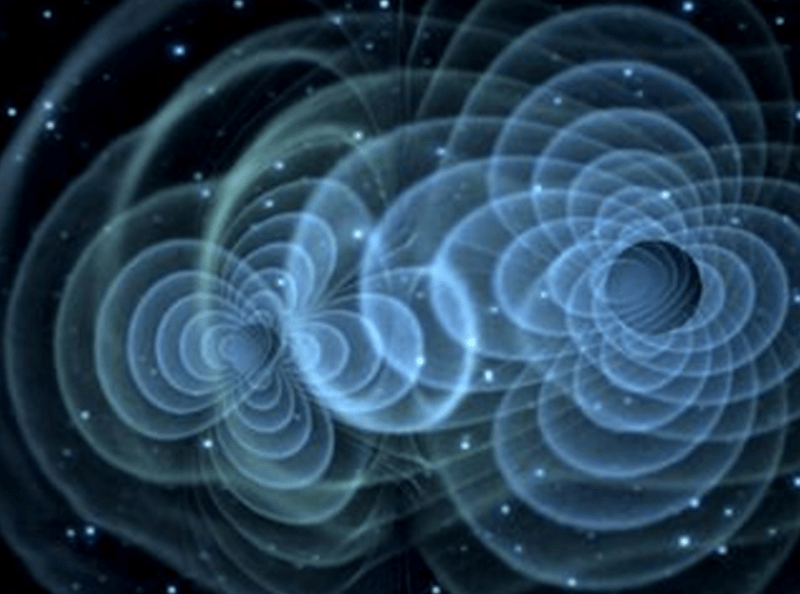A ripple in spacetime, a gravitational wave detected in May 2023, has astronomers grappling with a cosmic first: a collision unlike any ever observed before.
While one of the objects involved was a familiar entity, a neutron star, the identity of its partner remains a tantalizing mystery. This elusive object resides in a poorly understood region known as the “lower mass gap,” a zone between the most massive neutron stars and the least massive black holes.
This discovery, detailed in a recent study published by the LIGO collaboration, is rewriting our understanding of these celestial powerhouses and the drama that unfolds during their final moments.

Decoding the Gravitational Wave Symphony: A Tale of Two Cosmic Bodies
The gravitational wave signal, dubbed GW230529, whispered a story of a cosmic dance gone awry. LIGO, Virgo, and KAGRA collaborations, the leading gravitational wave detectors, meticulously analyzed the signal, revealing the presence of two celestial objects locked in a momentous merger. One of these objects was readily identifiable – a neutron star, a collapsed core of a massive star, packing unimaginable density into a sphere just 20 kilometers (12 miles) wide. However, the nature of the second object sent astronomers into a tizzy.
The Elusive Enigma: Unveiling the Mystery of the Mass Gap Object
The mass of this enigmatic object falls squarely within the elusive “lower mass gap.” This cosmic niche, a curious absence of detections between 2.3 and 5 solar masses, has perplexed scientists for decades. Are these missing objects heavyweight neutron stars pushing the limits of their possible mass, or are they lightweight black holes, the runt of the litter in the black hole kingdom?
The Intriguing Dance: A Neutron Star and its Mass-Gap Partner
The analysis placed the mass of the neutron star within a range of 1.2 to 2 solar masses, firmly within the expected range. However, the mass of its partner was a different story. Estimated to be between 2.5 and 4.5 solar masses, it landed smack dab in the center of the lower mass gap. While the current data cannot definitively classify it, surpassing the theoretical upper limit for a neutron star suggests it’s more likely a tiny black hole.
A New Chapter in the Story of Compact Objects: Implications for the Future
The significance of this discovery lies not just in identifying a new player in the cosmic drama, but in its implications for the future of our understanding of compact objects. Prior to gravitational wave detections, our knowledge of neutron stars and black holes stemmed primarily from electromagnetic observations within our own galaxy. The existence of the mass gap, a theory kicking around for over 25 years, was based on such observations. GW230529 throws a wrench into these established notions, hinting that the gap might not be as empty as previously thought.
This discovery has far-reaching consequences. It compels us to re-evaluate the mechanisms of supernova explosions, the violent stellar deaths that forge these compact objects. Traditionally, astronomers believed that extremely massive stars collapse into black holes, while stars with slightly less mass leave behind neutron stars. The existence of objects in the mass gap blurs this line, suggesting that the boundary between these two celestial titans might be more complex than previously thought. Additionally, it sheds light on the potential dazzling light shows that might erupt when a black hole devours a neutron star, a phenomenon astronomers are eagerly searching for.
The Quest Continues: Enhanced Detectors and the Promise of More Discoveries
As the LIGO, Virgo, and KAGRA detectors resume operations with improved sensitivity, the stage is set for a deluge of exciting discoveries. The hunt for more elusive objects in the mass gap and a deeper understanding of black holes and neutron stars is far from over. Every new detection adds a piece to the cosmic jigsaw puzzle, helping us to assemble a more complete picture of the exotic denizens of our universe. The coming months and years promise to be a thrilling time for gravitational wave astronomy, and with each discovery, we inch closer to unraveling the mysteries that lie hidden within the fabric of spacetime.
Furthermore, this finding underscores the remarkable capabilities of gravitational wave detectors. Unlike telescopes that rely on light, these instruments can perceive the ripples in spacetime caused by the most violent events in the cosmos, offering a unique window into a realm previously invisible to us. As detector technology continues to evolve, we can expect a treasure trove of new discoveries that will reshape our understanding of the universe’s most enigmatic objects and the celestial dramas that unfold within its vast expanse.



















